Stink Bugs
Stink bugs, scientifically known as Pentatomidae, are a family of insects characterized by their distinctive shield shape and foul-smelling defensive secretion. They are typically brown or green in color and have a triangular or pentagonal shape when viewed from above. Stink bugs are plant feeders, often found on fruits, vegetables, and ornamental plants, where they pierce the surface of the plant and suck out the juices.
When threatened or disturbed, stink bugs release a pungent odor from glands located on their thorax. This odor acts as a deterrent against predators, such as birds and other insects, by making the stink bug unpalatable or unpleasant to consume.
However, if you're facing a stink bug infestation, it's crucial to seek professional help like Alta Pest Control. Stink bugs can be agricultural pests, causing damage to crops by feeding on plant tissues and potentially transmitting plant diseases. Some species of stink bugs have become invasive pests in various parts of the world, posing significant challenges for farmers and gardeners. With Alta Pest Control's expertise, you can effectively manage and mitigate the impact of stink bugs on your crops and plants.
What Kinds of Stinkbugs are There?
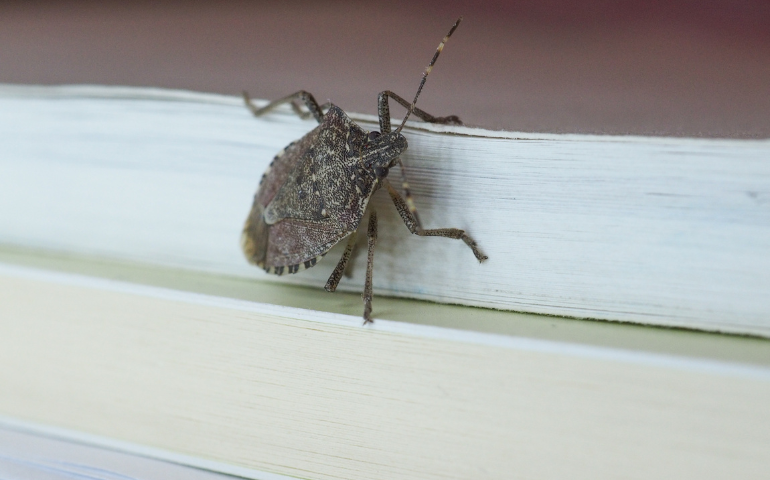
Originally native to Asia, this stink bug has become an invasive species in many parts of the world, including North America and Europe. It is known for its characteristic brown coloration and its tendency to seek shelter indoors during the cooler months. It is commonly found in homeowners' gardens in the United States.
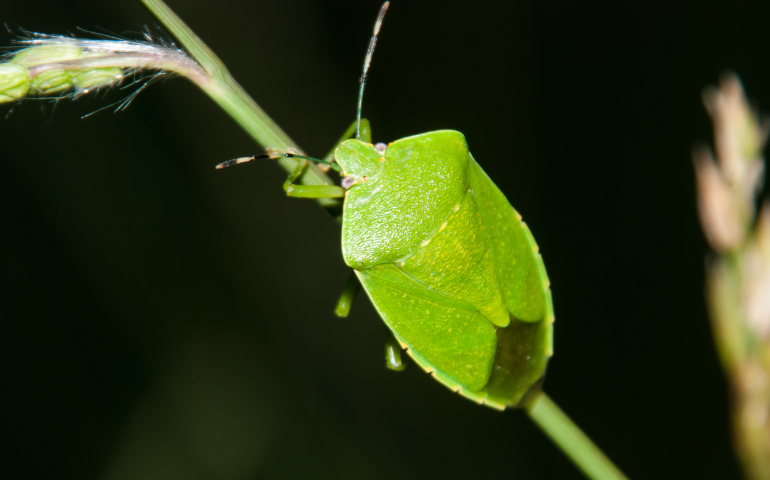
As the name suggests, this species is typically green in color and is found in various regions worldwide. It feeds on a wide range of crops and plants and can be a significant agricultural pest.
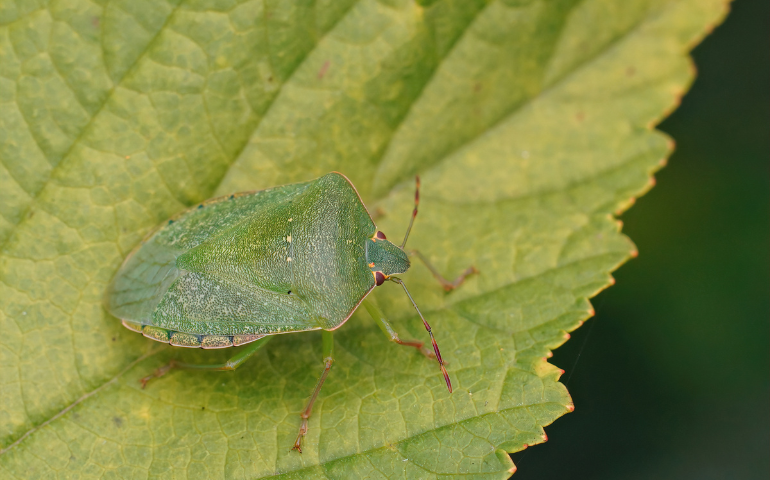
This species is commonly found in warmer regions, including parts of Africa, Asia, Australia, and the Americas. It is green with yellow or orange markings and can cause damage to crops such as soybeans, cotton, and various fruits.
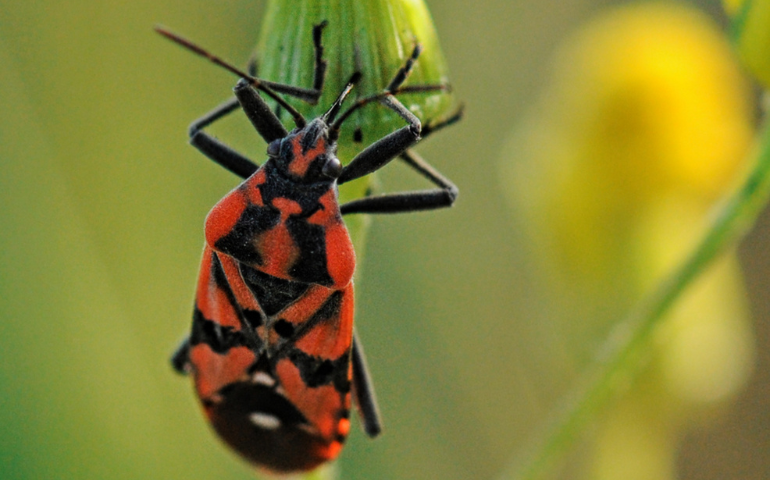
Recognizable by its striking black and red coloration, the harlequin bug is native to North and Central America. It feeds primarily on plants in the mustard family, including cabbage, kale, and broccoli, making it a nuisance for gardeners and farmers.
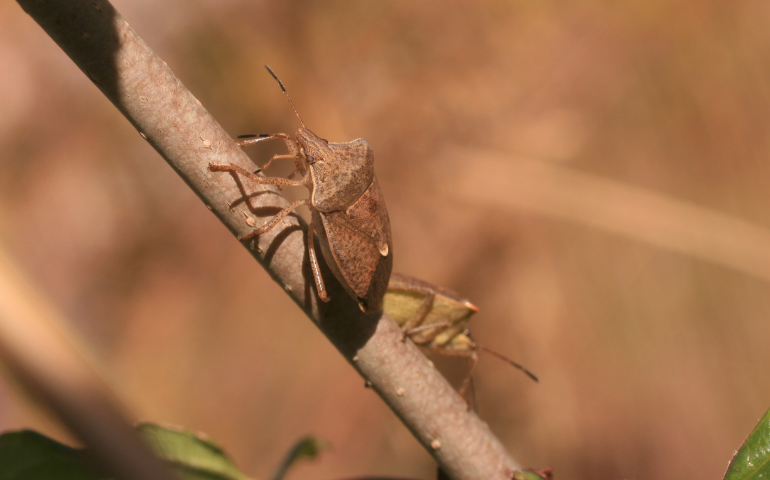
Unlike many other stink bugs, the spined soldier bug is beneficial to agriculture as it preys on other insect pests, including caterpillars, beetles, and aphids. It is native to North America and is often used as a biological control agent in pest management programs.
These are just a few examples of the diverse array of stink bug species found worldwide, each with its own unique characteristics and behaviors. If dealing with stink bug infestations in your garden, professional help like Alta Pest Control might be necessary to mitigate their impact.
Are Stink Bugs Harmful To Homeowners?
Stink bugs are generally considered nuisance pests rather than harmful pests to humans. However, they can be harmful in several ways:
- Agricultural Damage: Stink bugs can cause significant damage to crops by piercing plant tissues and sucking out the juices. This feeding behavior can lead to reduced crop yields and economic losses for farmers.
- Garden Damage: In home gardens, stink bugs can also damage fruits, vegetables, and ornamental plants, leading to aesthetic and economic losses for homeowners.
- Indoor Nuisance: During the cooler months, some species of stink bugs may seek shelter indoors, becoming a nuisance to homeowners. They can congregate in large numbers and emit a foul-smelling odor if disturbed or crushed.
- Allergic Reactions: While rare, some individuals may experience allergic reactions to stink bug secretions, resulting in skin irritation or respiratory symptoms.
- Crop Diseases: In addition to direct feeding damage, stink bugs can also transmit plant diseases, further impacting crop health and productivity.
While stink bugs are not directly harmful to humans in the sense of causing physical harm or transmitting diseases, they can still have detrimental effects on agriculture, horticulture, and overall household comfort. Therefore, effective pest management strategies may be necessary to control stink bug populations and minimize their impact.
Why Do I Have Brown Stink Bugs In My House?
Brown stink bugs, particularly the Brown Marmorated Stink Bug (Halyomorpha halys), are often found in houses, especially during the cooler months. There are several reasons why you might have these stink bugs in your house:
- Seeking Shelter: Stink bugs are attracted to warm, sheltered spaces as temperatures drop in the fall and winter. They may enter homes through small cracks, gaps around windows and doors, or other openings in search of a protected environment to overwinter.
- Accidental Entry: Stink bugs can inadvertently enter homes through open doors, windows, or gaps in screens while individuals are entering or leaving the house. Once inside, they may remain hidden in walls, attics, or other secluded areas.
- Attraction to Light: Stink bugs are often attracted to light sources, which can draw them towards illuminated windows or doors. This can increase the likelihood of stink bugs entering your home, especially during the evening hours when indoor lights are on.
- Nearby Infestations: If there are stink bug populations in close proximity to your home, such as in gardens, agricultural fields, or neighboring properties, it’s more likely that stink bugs will find their way indoors, especially as temperatures cool.
- Overwintering Behavior: Many stink bugs, including the Brown Marmorated Stink Bug, exhibit overwintering behavior, seeking refuge indoors to survive the colder temperatures. Once inside, they may remain dormant until temperatures rise again in the spring.
To prevent stink bugs from entering your home, you can take proactive measures such as sealing cracks and crevices, repairing damaged screens, installing weather stripping around doors and windows, and using exterior insecticides or barriers. If you already have a stink bug infestation in your home, you may need to call a pest control professional such as Alta for effective removal and management strategies.
How To Get Rid of Stink Bugs From Your Home With Alta Pest Control
At Alta Pest Control, we provide effective solutions for getting rid of stink bugs from your home. Here’s how we can help:
- Inspection: Our trained technicians will inspect your property to identify areas where stink bugs are entering your home and where they are congregating indoors.
- Exclusion: We’ll help seal off entry points that stink bugs are using to enter your home. This may involve caulking cracks and gaps around windows, doors, vents, and utility openings.
- Interior Treatment: Our team may apply targeted insecticides or other treatments indoors to eliminate stink bugs hiding within your home. These treatments are typically applied in areas where stink bugs are commonly found, such as attics, basements, and crawl spaces.
- Exterior Treatment: We’ll apply outdoor perimeter treatments to create a barrier around your home, deterring stink bugs from entering. These treatments may include residual insecticides or other products designed to repel stink bugs.
- Monitoring and Follow-Up: We’ll continue to monitor your property for stink bug activity and provide follow-up treatments as needed to ensure effective control.
- Education and Prevention: Our team may offer advice on how to prevent future stink bug infestations, such as keeping vegetation trimmed away from the home, sealing potential entry points, and reducing outdoor lighting that attracts stink bugs.
By working with Alta Pest Control, you can trust us to effectively eliminate stink bugs from your home and prevent future infestations, ensuring a pest-free living environment.
